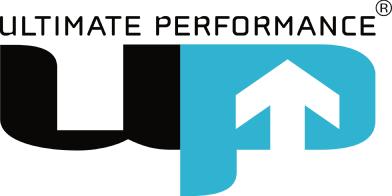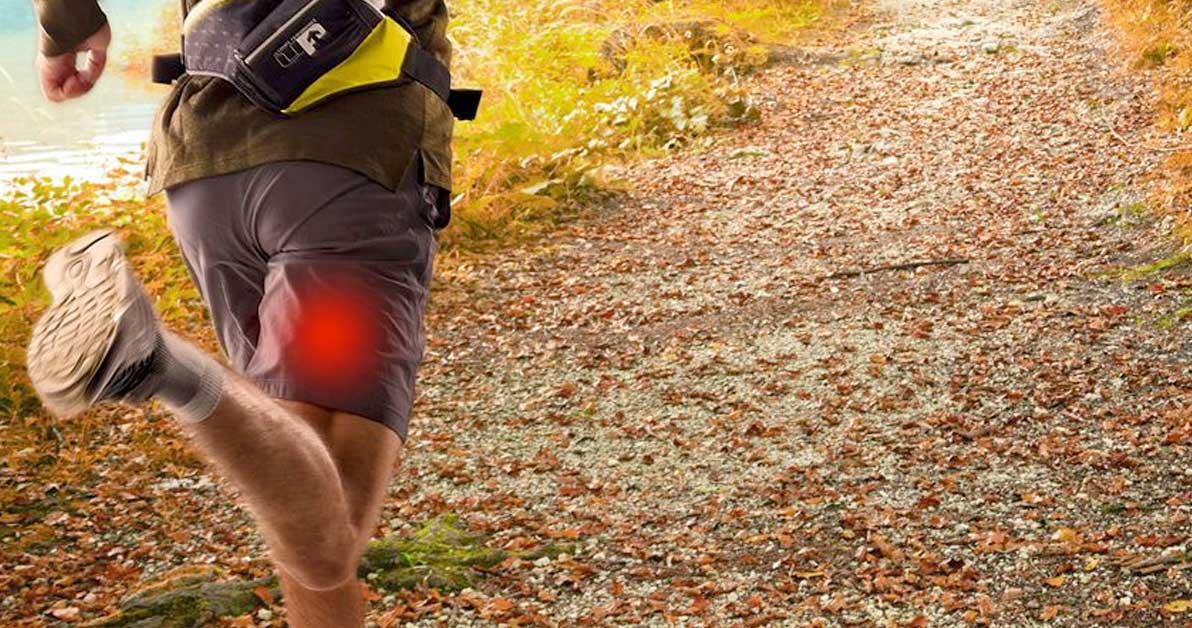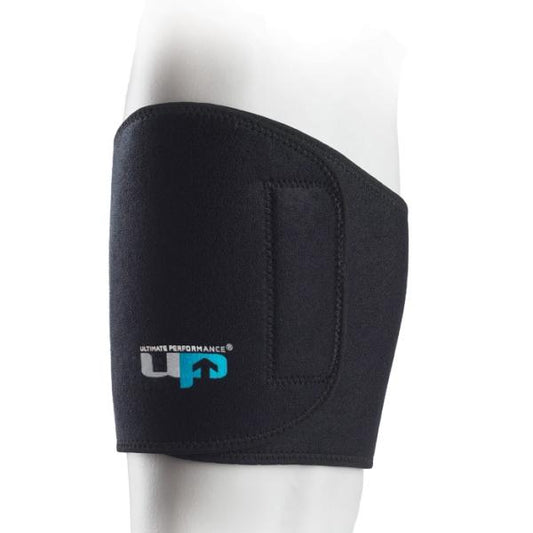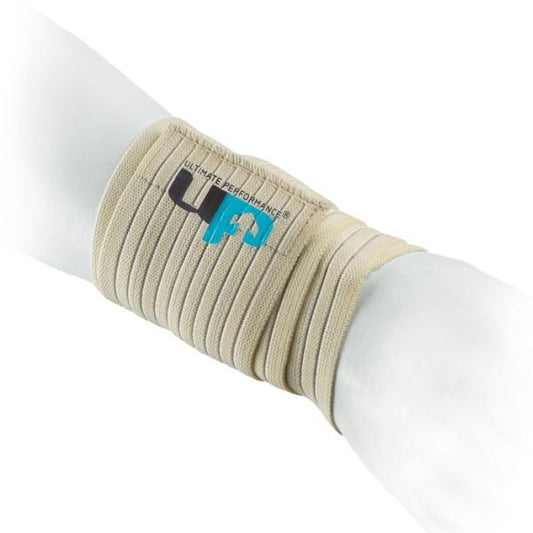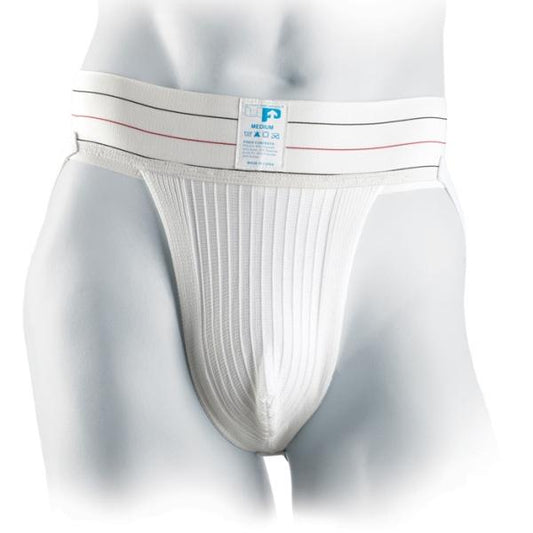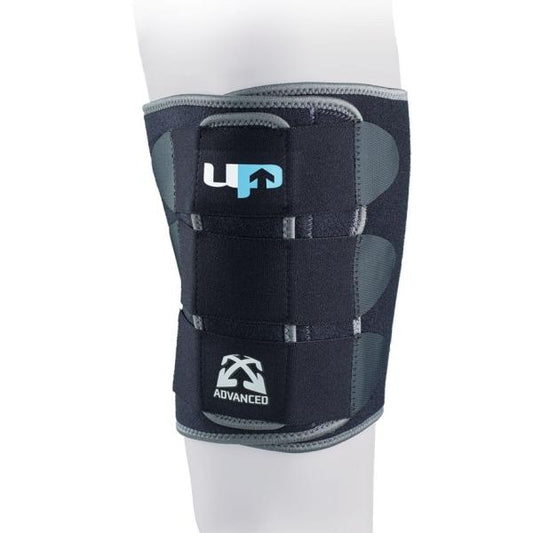Ultimate Performance range of thigh supports are Class 1 Medical Devices and help recover from and prevent thigh injuries including thigh strain, pulled hamstring, groin strain and contusions.
Choosing Thigh and Groin Supports
A thigh support is excellent for helping to prevent and recover from thigh muscle strains. The most common injuries are Hamstring strain (at the back of the thigh), Thigh strain (front) and Groin strain (inside). They are all tears of the muscle which may range from very mild to severe.
Best thigh support for me?
Both the Advanced neoprene thigh support and Ultimate neoprene thigh support are suitable for both initial first aid and longer term rehabilitation of thigh muscle injuries.
If you have suffered a thigh muscle injury then it is important to apply the PRICE principles of protection, rest, ice, compression and elevation. Our thigh supports protect the muscle from further injury through compression. This also helps limit bleeding and swelling. They can also be used in conjunction with a cold therapy gel pack to apply cold compression.
Neoprene thigh supports
Later in the rehabilitation process the neoprene becomes more important. It is a rubber based material which applies compression, but also retains body heat. As a result, the muscle is warmed up which increases blood flow. This aids the healing process as blood carries nutrients to the injured muscle which also works more effectively when warm.
Severe muscle strains
If you have a more severe muscle injury then you may wish to choose the Advanced neoprene thigh support with the extra compression straps. This means you can increase the support and target compression more accurately over the site of injury.
Hamstring supports
Both the Advanced neoprene thigh support and Ultimate neoprene thigh support are suitable for pulled hamstrings. The advanced neoprene thigh support is probably the best hamstring support to go for because of the additional straps, which allow accurate variable compression.
Kinesiology tape is also used for hamstring strains but is more useful later in the rehabilitation process to either deactivate the muscle, or activate it depending on what stage of rehabilitation you are at.
